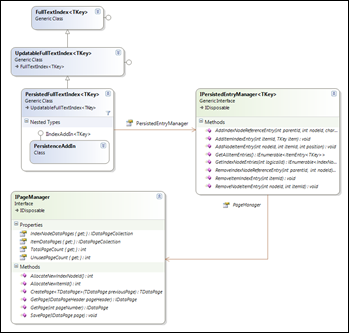Implementing a persisted file store for LIFTI
Over a month ago I started to write a persisted file store for LIFTI. Given that I’d pretty much just finished implementing binary serialization for indexes, why would I want to do that?
Serialization vs. persistence
I wrote the serialization classes because I knew that it wasn’t always going to be appropriate to re-index all the data every time an application started up. These classes allowed for the current state of an index to be saved to and reloaded from disk. This meant that when the application exited, a developer could save what was currently in the index and reload it the next time it started. The problem for me lies in the word exited. At what point would you persist your index if you application crashed?
There were also larger questions around data integrity - if you were indexing your data in LIFTI, but storing it in another database (e.g. SQL Express, SQLLite, etc) then you would probably want to make sure that both are synchronized. Ideally you would wrap the calls to both in a single transaction scope and thus guarantee that they were both in a consistent state should a failure occurred.
One option would be to use the serialization process to persist the entire index after every modifying operation, but that would be very inefficient and wouldn’t scale. Persistence, for me, is a much more subtle use of serialization. When different parts of the index change - items are added, nodes are created in the n-ary tree - only the changed data (or at least a smallest as possible set of data) is serialized to a file. This happens automatically, without any intervention by the user. When the application is restarted, the index can be re-loaded from disk, and begin in the state it was left at when the application was last closed.
Once the index is being committed to disk immediately, it becomes feasible to enlist in a transaction and guarantee consistency as well as durability.
The PersistedFullTextIndex
As of now, I’ve implemented only the persisted backing store for the index. I’m going to hold off doing another release build until I’ve got transactions in place, but if you’re really keen you can download the latest source and try it out from there.
I’ll be documenting the underlying changes that have occurred in LIFTI to support this over the coming weeks. To whet your appetite, here’s a very high level diagram, starting from the PersistedFullTextIndex class: (click for a bigger version)
The transaction work is probably next on my plate for LIFTI. This is another interesting chunk of work, but it should be fun.
